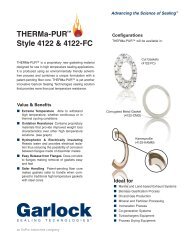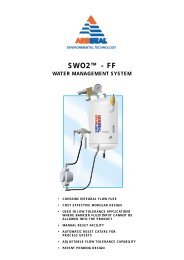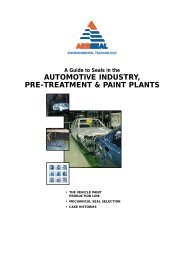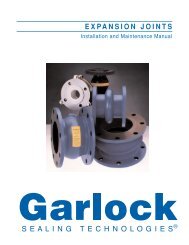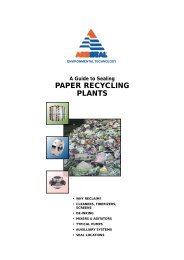Create successful ePaper yourself
Turn your PDF publications into a flip-book with our unique Google optimized e-Paper software.
The Proven Leader in Dry Chlorine<br />
In dry chlorine service, valves must be capable<br />
of absolute shutoff while maintaining piping<br />
system integrity (no stem seal leakage). For<br />
cost-effectiveness, they must also offer long<br />
service life. Simple enough, yet the punishing<br />
nature of chlorine handling has defeated many<br />
types of chlorine valves and forced users to<br />
accept compromises in performance and safety.<br />
Such compromises are no longer necessary.<br />
Positive Relief<br />
In accordance with the Chlorine Institute<br />
Pamphlet No. 6, all dry chlorine ball valves must<br />
be equipped to relieve excess pressure in the<br />
ball cavity toward the direction of high pressure.<br />
This is an important safety feature, ensuring that<br />
excess pressure in a closed valve will bleed off<br />
harmlessly. <strong>Cam</strong>-Tite Ball Valves prepared for<br />
dry chlorine service are equipped with a positive<br />
vent in the valve body as opposed to competitive<br />
designs that rely on self-relieving seats or vents<br />
through the ball or plug. Experi-ence has proven<br />
that self-relieving seats do not provide predictable<br />
performance. Placing the vent in the<br />
body eliminates the possibility of installing a<br />
vented ball or plug backwards. A positive body<br />
vent is the only way to provide predictable,<br />
repeatable safety relief.<br />
Note: <strong>Cam</strong>-Tite Ball Valves supplied with vented<br />
bodies are considered unidirectional with<br />
regards to shut-off.<br />
Valve Body Vent For Positive Pressure Relief<br />
Thousands of installed <strong>Cam</strong>-Tite valves are<br />
demonstrating their superiority, based on three<br />
important features:<br />
• Patented Ball Design – Assures zero leakage<br />
through the valve.<br />
• Superior Stem Seals – Prevents leakage to<br />
the atmosphere.<br />
• Positive Valve Body Vent<br />
Chlorine Valve Preparation<br />
Preparation in accordance with the Chlorine<br />
Institute Pamphlet 6 includes:<br />
• A relief vent in the body to bypass the<br />
upstream seat.<br />
• A cast arrow on the body to indicate the<br />
direction of pressure tightness.<br />
• Special cleaning of all valve components.<br />
• Special testing for seat tightness and relief<br />
port venting.<br />
• Special packaging and marking.<br />
<strong>Cam</strong>-Tite Ball Valves for dry chlorine service<br />
are usually supplied with cast carbon steel<br />
(ASTM A216 Gr. WCB) bodies, monel ball and<br />
stem, and reinforced PTFE seats, seals and<br />
cover gasket. Other materials, including alloy 20,<br />
hastelloy, and ceramic are commonly used in<br />
chlorine services and are available as required.<br />
When ordering valves "Prepared for Dry<br />
Chlorine Service", specify code "CLV" in the<br />
configuration number.<br />
11



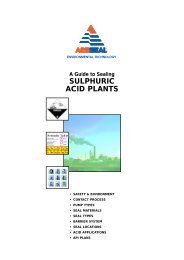
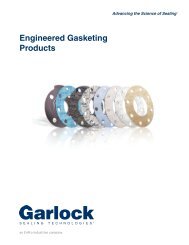
![VCS Flange Gasket [1.03 MB] - AR Thomson Group](https://img.yumpu.com/12044617/1/190x245/vcs-flange-gasket-103-mb-ar-thomson-group.jpg?quality=85)

![PGE Flange Gasket Product Brochure [1.04 MB] - AR Thomson Group](https://img.yumpu.com/12044595/1/190x245/pge-flange-gasket-product-brochure-104-mb-ar-thomson-group.jpg?quality=85)
